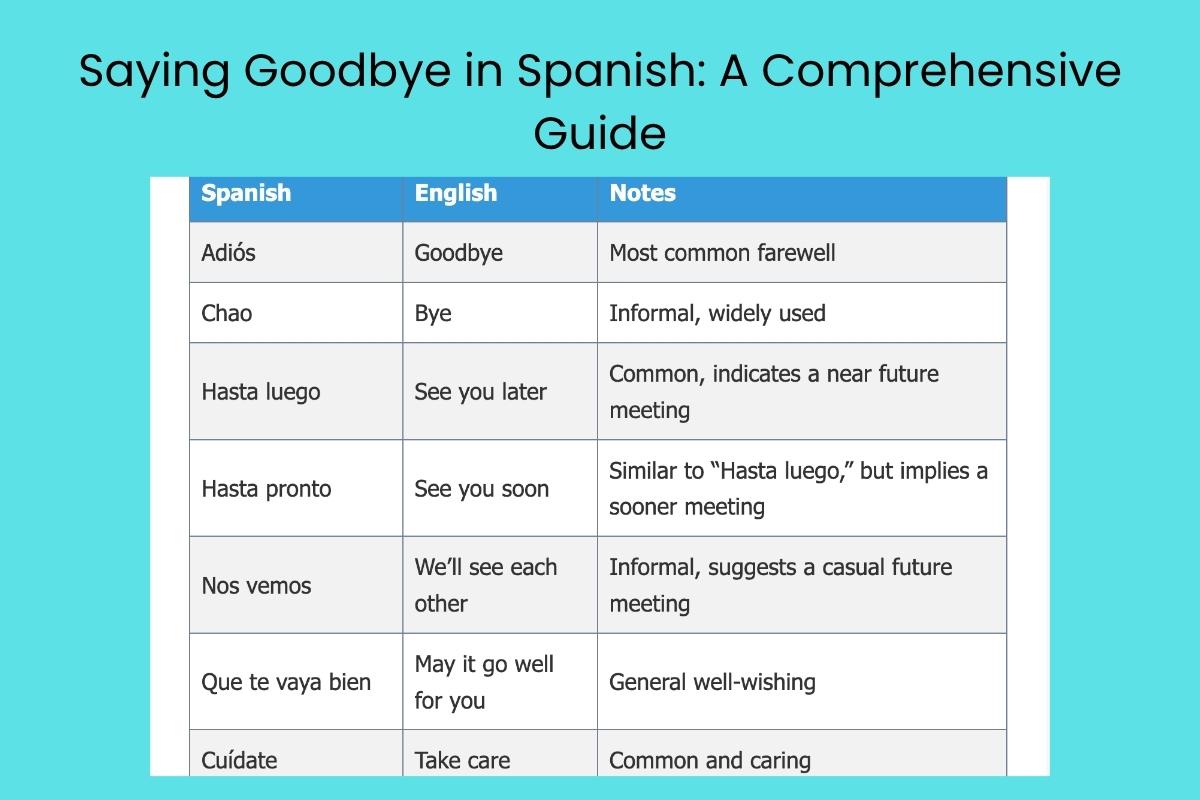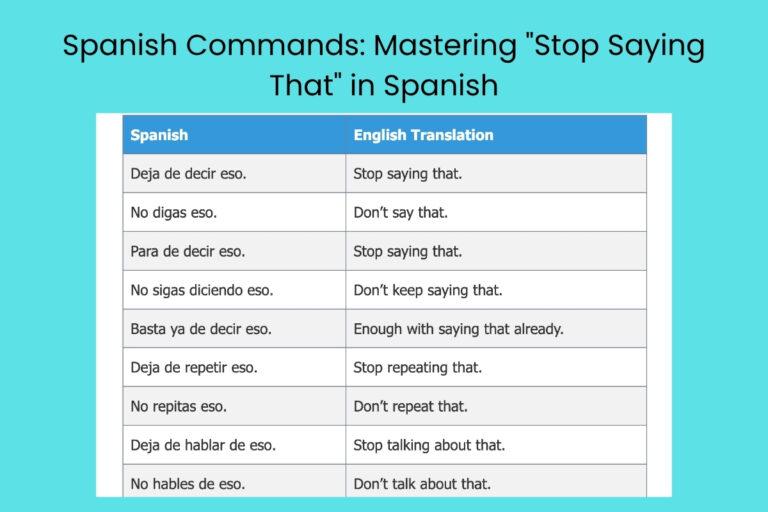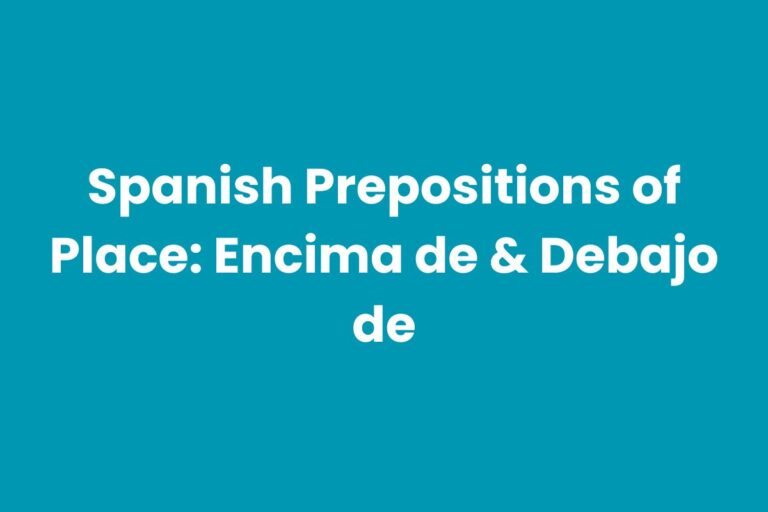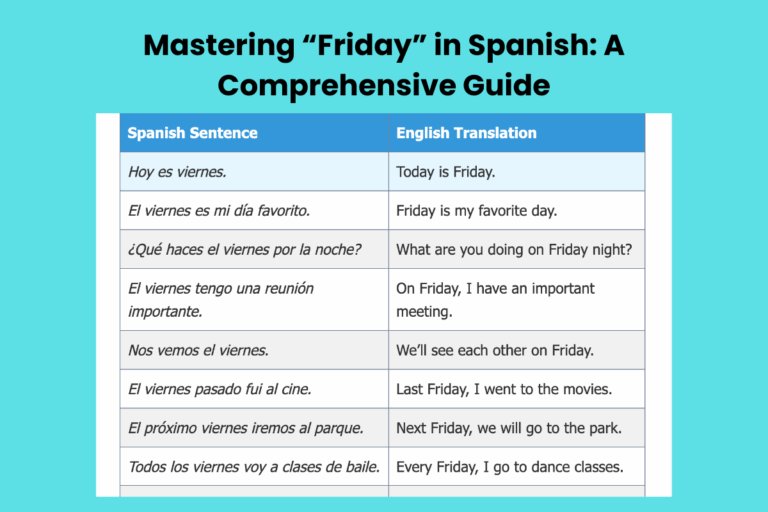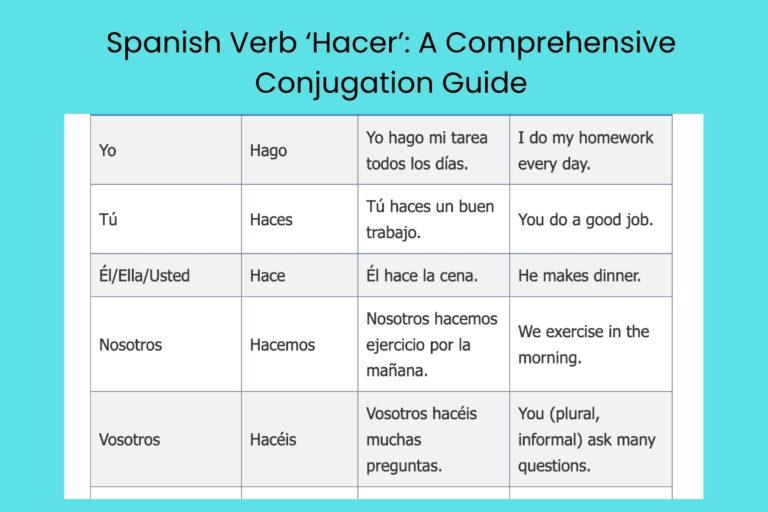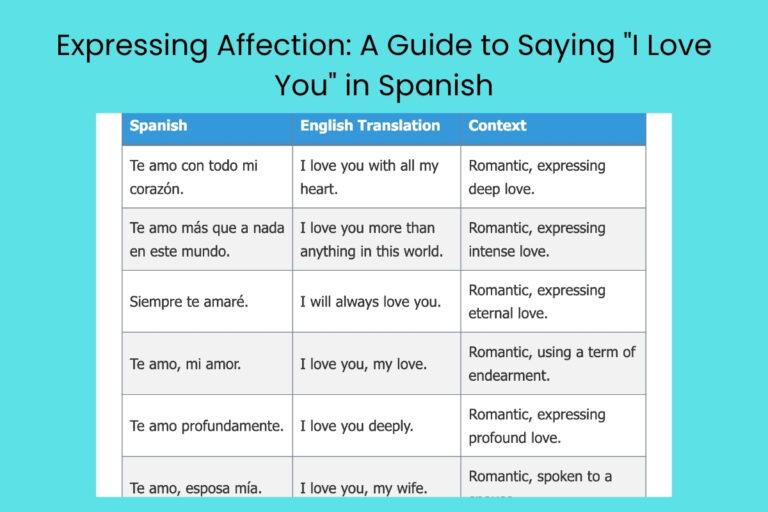Saying Goodbye in Spanish: A Comprehensive Guide
Mastering farewells in Spanish is crucial for effective communication and cultural sensitivity. Just as in English, there are numerous ways to say goodbye, each carrying its own nuance and level of formality.
This guide provides a comprehensive overview of Spanish farewells, covering everything from basic expressions to more advanced and regional variations. Whether you’re a beginner or an advanced learner, this guide will equip you with the knowledge and practice you need to confidently say goodbye in any Spanish-speaking context.
Understanding these farewells not only enhances your vocabulary but also provides insights into the cultural values and social etiquette of Spanish-speaking countries. This guide is designed for students, travelers, business professionals, and anyone interested in improving their Spanish language skills and cultural competence.
By the end of this guide, you’ll be able to choose the most appropriate farewell for any situation, ensuring smooth and respectful interactions.
Table of Contents
- Introduction
- Definition of Saying Goodbye in Spanish
- Structural Breakdown of Spanish Farewells
- Types and Categories of Spanish Farewells
- Examples of Spanish Farewells
- Usage Rules for Spanish Farewells
- Common Mistakes in Saying Goodbye
- Practice Exercises
- Advanced Topics in Spanish Farewells
- Frequently Asked Questions
- Conclusion
Definition of Saying Goodbye in Spanish
Saying goodbye in Spanish involves using a variety of expressions to indicate the end of a conversation or encounter. These expressions vary in formality, regional usage, and the specific context of the interaction.
The act of saying goodbye is not merely a linguistic function; it also carries significant social and cultural weight. It reflects the relationship between the speakers, the setting, and the anticipated duration until their next meeting.
The Spanish language offers a rich array of farewells, ranging from simple and universal phrases like “Adiós” to more elaborate and situation-specific expressions. The choice of farewell often depends on factors such as the level of formality between the speakers, the time of day, and regional preferences. Understanding these nuances is essential for effective communication and demonstrating cultural sensitivity.
In essence, saying goodbye in Spanish is a multifaceted act that encompasses linguistic, social, and cultural dimensions. It requires not only knowledge of the appropriate vocabulary but also an understanding of the underlying cultural norms and expectations.
Mastering this aspect of the language is crucial for building strong relationships and navigating social situations with confidence.
Structural Breakdown of Spanish Farewells
Spanish farewells, while diverse, often follow specific structural patterns. Many farewells consist of a single word, such as “Adiós” or “Chao,” which function as standalone expressions. Others are more complex, involving phrases that include verbs, adverbs, and pronouns. Understanding these structural elements can help learners better comprehend and utilize different farewells.
A common structure involves the use of verbs like “ir” (to go) or “ver” (to see) in conjunction with adverbs or prepositions. For example, “Me voy” (I’m leaving) uses the reflexive form of “ir” to indicate departure. Similarly, “Hasta luego” (See you later) employs the preposition “hasta” (until) to express the expectation of a future meeting. The structure can also include expressions of well-wishing, such as “Que te vaya bien” (May it go well for you).
Furthermore, the use of pronouns and verb conjugations is crucial in conveying the appropriate level of formality. Using “usted” (formal you) instead of “tú” (informal you) in a farewell phrase indicates respect and deference. The subjunctive mood may also be used in certain farewells to express hopes or wishes, such as “Espero que tengas un buen día” (I hope you have a good day).
Types and Categories of Spanish Farewells
Spanish farewells can be categorized based on several factors, including formality, time of day, regional usage, and the specific context of the interaction. By understanding these categories, learners can choose the most appropriate farewell for any given situation.
Basic Farewells
These are the most common and widely used farewells in Spanish. They are suitable for a variety of situations and can be used with both friends and strangers.
Formal Farewells
These farewells are used in professional settings or when addressing someone with respect, such as an older person or a superior. They often involve more polite and respectful language.
Informal Farewells
These are used with friends, family, and close acquaintances. They often involve more casual and relaxed language.
Farewells by Time of Day
Some farewells are specific to certain times of the day, such as morning, afternoon, or night. These farewells often include wishes for a good rest or a productive day.
Regional Variations
Spanish is spoken in many different countries and regions, each with its own unique expressions and dialects. Some farewells are more common in certain regions than others.
Extended Farewells
These involve more elaborate phrases and expressions of goodwill, often used when parting for a longer period or when wishing someone well in their future endeavors.
Examples of Spanish Farewells
This section provides a comprehensive list of examples, categorized by the types of farewells discussed above. Each example includes the Spanish phrase, its English translation, and notes on its usage.
Basic Farewell Examples
These examples are suitable for everyday use and can be used in a variety of situations.
Here are some example of Basic Farewells:
| Spanish | English | Notes |
|---|---|---|
| Adiós | Goodbye | Most common farewell |
| Chao | Bye | Informal, widely used |
| Hasta luego | See you later | Common, indicates a near future meeting |
| Hasta pronto | See you soon | Similar to “Hasta luego,” but implies a sooner meeting |
| Nos vemos | We’ll see each other | Informal, suggests a casual future meeting |
| Que te vaya bien | May it go well for you | General well-wishing |
| Cuídate | Take care | Common and caring |
| Un saludo | A greeting | Used when you might not see them again for a while. |
| Que tengas un buen día | Have a good day | General, suitable for most situations |
| Igualmente | Likewise | Response to “Que tengas un buen día” or similar |
| Hasta la vista | Until we meet again | Less common in everyday conversation, more dramatic. |
| Me voy | I’m leaving | Simply stating that you are departing. |
| Te veo luego | I’ll see you later | Informal, similar to “Hasta luego”. |
| Hablamos pronto | We’ll talk soon | Suggesting you’ll be in touch. |
| Feliz día | Happy day | Wishing someone a happy day. |
| Todo lo mejor | All the best | Wishing someone the best in general. |
| Un abrazo | A hug | Used between friends or family. |
| Un beso | A kiss | Used between close friends or family, often cheek kiss. |
| Saludos | Greetings | A general way to say goodbye to a group. |
| Adiosito | Bye Bye | Diminutive form of “Adiós”, very informal. |
| Ya me voy | I’m off now | Emphasizing that you’re leaving. |
| Que te sea leve | May it be easy for you | Wishing someone ease in what they are about to do. |
| Pásalo bien | Have a good time | Wishing someone a good time. |
Formal Farewell Examples
These examples are appropriate for professional settings or when addressing someone with respect.
Here are some example of Formal Farewells:
| Spanish | English | Notes |
|---|---|---|
| Que tenga un buen día | Have a good day (formal) | Formal version of “Que tengas un buen día” |
| Que le vaya bien | May it go well for you (formal) | Formal version of “Que te vaya bien” |
| Espero verlo pronto | I hope to see you soon (formal) | Formal way of expressing hope for a future meeting |
| Ha sido un placer | It has been a pleasure | Used after a meeting or conversation |
| Le agradezco su tiempo | I thank you for your time | Expressing gratitude for someone’s time |
| Con permiso | With your permission | Formal way of excusing oneself |
| Hasta la próxima | Until next time | Formal, indicating a future meeting |
| Tenga una buena tarde | Have a good afternoon (formal) | Specific to the afternoon |
| Tenga una buena noche | Have a good night (formal) | Specific to the evening/night |
| Le deseo lo mejor | I wish you the best (formal) | Expressing well-wishes |
| Atentamente | Sincerely | Used in formal written correspondence |
| Respetuosamente | Respectfully | Another option for formal written correspondence |
| Quedo a su disposición | I remain at your service | Formal way of offering assistance |
| Espero su respuesta | I await your response | Used in formal correspondence when expecting a reply |
| Le mantendré informado | I will keep you informed | Used in professional settings to assure follow-up |
| Gracias por su atención | Thank you for your attention | Expression of gratitude in formal settings |
| Que descanse | May you rest | A formal way of wishing someone rest, usually at night |
| Fue un honor conocerle | It was an honor to meet you | Used when meeting someone important or respected |
| Me despido | I bid you farewell | A very formal way of saying goodbye |
| Sin más por el momento | Without more for the moment | Used in formal writing to indicate the end |
| Agradeciendo de antemano | Thanking you in advance | Used in formal requests or invitations |
| En espera de sus noticias | Awaiting your news | Used in formal correspondence |
| Reciba un cordial saludo | Receive a cordial greeting | Used in formal written correspondence |
Informal Farewell Examples
These examples are suitable for use with friends, family, and close acquaintances.
Here are some example of Informal Farewells:
| Spanish | English | Notes |
|---|---|---|
| Nos vemos | See you | Very common and informal |
| Hasta la próxima | Until next time | Informal way of saying “see you later” |
| Cuídate mucho | Take good care | More emphatic than “Cuídate” |
| Un abrazo | A hug | Common between friends and family |
| Un beso | A kiss | Used between close friends and family |
| Que descanses | Get some rest | Said at night |
| Pásalo bien | Have a good time | Wishing someone a good time |
| Chao, chao | Bye, bye | Playful and very informal |
| Hablamos | We’ll talk | Short for “Hablamos luego” |
| Que te diviertas | Have fun | Wishing someone fun |
| Dale | Okay/Alright | Used as a casual agreement and farewell |
| Ya sabes | You know | Used to emphasize familiarity |
| Buena suerte | Good luck | Wishing someone luck |
| Que te mejores | Get well soon | Said to someone who is sick |
| Hasta otra | Until another time | Informal way of saying “see you later” |
| Ahí nos vemos | See you there | Said when you know where you’ll see them next |
| Ten cuidado | Be careful | Advising someone to be careful |
| Ojo | Watch out | Similar to “Ten cuidado” |
| Estamos en contacto | We’ll be in touch | Saying you’ll keep in touch |
| Un saludito | A little greeting | Diminutive form of “Saludos,” very informal |
| Te cuidas | Take care (of yourself) | Informal way of saying “Cuídate” |
| Que sigas bien | Hope you continue well | Wishing someone to continue doing well |
| Que todo te salga bien | May everything go well for you | Wishing someone success in their endeavors |
Farewells by Time of Day Examples
These examples are specific to certain times of the day.
Here are some example of Farewells by Time of Day:
| Spanish | English | Notes |
|---|---|---|
| Buenas tardes | Good afternoon | Used as both a greeting and a farewell in the afternoon |
| Buenas noches | Good evening/night | Used as both a greeting and a farewell in the evening/night |
| Que pases una buena tarde | Have a good afternoon | Wishing someone a good afternoon |
| Que pases una buena noche | Have a good night | Wishing someone a good night |
| Que descanses | Rest well | Said at night before sleeping |
| Feliz noche | Happy night | Wishing someone a happy night |
| Hasta mañana | Until tomorrow | Said when you’ll see someone the next day |
| Hasta el lunes | Until Monday | Replace “lunes” with any day of the week |
| Dulces sueños | Sweet dreams | Wishing someone sweet dreams |
| Que sueñes con los angelitos | Dream of little angels | A cute way of wishing sweet dreams |
Regional Variations Examples
These examples vary depending on the Spanish-speaking region.
Here are some example of Regional Variations:
| Spanish | English | Region | Notes |
|---|---|---|---|
| ¡Qué estés bien! | Hope you’re well! | Mexico | Common in Mexico |
| Pura vida | Pure life | Costa Rica | Used as a general expression of well-being and goodbye |
| ¡Ciao! | Bye! | Argentina, Uruguay | Italian influence, common as an informal goodbye |
| ¡Aló! | Hello/Goodbye! | Colombia | Used on the phone |
| ¡Al toque! | See you later! | Peru | Informal |
| ¡Al tiro! | See you later! | Chile | Informal |
| ¡Al ratito! | See you in a bit! | Mexico | Informal |
| ¡De nada! | You’re welcome! | Spain | Also used as a way of ending a conversation politely |
| ¡Que andes bien! | Hope you walk well! | Argentina | Wishing someone well on their way |
Usage Rules for Spanish Farewells
Choosing the right farewell in Spanish depends on several factors, including the level of formality, the time of day, regional differences, and the context of the interaction.
Formality
Use formal farewells in professional settings or when addressing someone with respect. Use informal farewells with friends, family, and close acquaintances.
Time of Day
Use time-specific farewells such as “Buenas tardes” or “Buenas noches” at the appropriate times of day. These are generally safe and polite.
Regional Differences
Be aware of regional variations in farewells and use the expressions that are common in the specific region you are in. If unsure, stick to “Adiós” or “Hasta luego,” which are universally understood.
Context and Relationship
Consider the context of the interaction and your relationship with the other person when choosing a farewell. A casual “Chao” might be appropriate with a friend but not with your boss.
Common Mistakes in Saying Goodbye
One common mistake is using informal farewells in formal situations, which can be perceived as disrespectful. Another mistake is misusing time-specific farewells, such as saying “Buenas noches” in the afternoon.
Additionally, learners may not be aware of regional variations and use expressions that are not common or understood in certain areas.
Here are some examples of common mistakes:
| Incorrect | Correct | Explanation |
|---|---|---|
| Chao, Señor | Adiós, Señor | “Chao” is too informal for addressing someone formally. |
| Buenas noches (at 3 PM) | Buenas tardes | “Buenas noches” is only appropriate in the evening/night. |
| Hasta mañana (when you won’t see them tomorrow) | Hasta luego | “Hasta mañana” implies seeing the person the next day. |
Practice Exercises
Test your knowledge of Spanish farewells with these practice exercises. Choose the most appropriate farewell for each situation.
| Question | Answer |
|---|---|
| You are leaving a business meeting. What do you say? | Que tenga un buen día. |
| You are saying goodbye to a close friend. What do you say? | Nos vemos. |
| You are leaving a restaurant in the afternoon. What do you say? | Buenas tardes. |
| You are saying goodbye to someone you will see tomorrow . What do you say? | Hasta mañana. |
| You are saying goodbye to someone in Costa Rica. What do you say? | Pura vida. |
| You are saying goodbye to a colleague at the end of the day. What do you say? | Que descanses. |
| You are saying goodbye to your grandmother. What do you say? | Un beso. |
| You are saying goodbye to someone over the phone in Colombia. What do you say? | Aló. |
| You are saying goodbye to a group of people. What do you say? | Saludos. |
| You are saying goodbye to someone you will see again soon. What do you say? | Hasta pronto. |
Advanced Topics in Spanish Farewells
For advanced learners, there are several more nuanced aspects of Spanish farewells to explore.
Conditional Farewells
These involve farewells that are dependent on certain conditions or circumstances. For example, “Si no te veo, ¡feliz Navidad!” (If I don’t see you, Merry Christmas!).
Farewells with Wishes
These include more elaborate expressions of goodwill and wishes for the future. For example, “Que Dios te bendiga” (May God bless you).
Humorous Farewells
These are playful and lighthearted farewells that are used in informal settings. For example, “¡Que te pisen un coche!” (May a car run you over!), which is a humorous way of saying goodbye in some regions, though it should be used with caution.
Frequently Asked Questions
- What is the most common way to say goodbye in Spanish?
The most common way to say goodbye in Spanish is “Adiós.” It’s a versatile and widely understood farewell that can be used in various situations, both formal and informal. However, its frequency doesn’t negate the importance of learning other farewells for different contexts.
- How do I say goodbye in a formal setting?
In a formal setting, it’s best to use phrases like “Que tenga un buen día” (Have a good day), “Que le vaya bien” (May it go well for you), or “Ha sido un placer” (It has been a pleasure). These expressions convey respect and professionalism. Using the formal “usted” form is also crucial in these situations.
- What is a casual way to say goodbye to a friend?
For a casual goodbye to a friend, you can use phrases like “Chao,” “Nos vemos,” “Hasta luego,” or “Cuídate.” These are all informal and friendly ways to end a conversation. Adding a hug or a kiss (on the cheek) is also common in many Spanish-speaking cultures.
- How do I say goodbye at night?
At night, you can say “Buenas noches” (Good night) as a farewell. You can also use “Que descanses” (Rest well) or “Feliz noche” (Happy night) to wish someone a good night’s rest. These phrases are appropriate for ending an evening conversation or before going to bed.
- Are there regional differences in saying goodbye?
Yes, there are regional differences in Spanish farewells. For example, in some Latin American countries, you might hear “Ciao” (borrowed from Italian) used informally. In Costa Rica, “Pura vida” is a common expression used as a general farewell. Being aware of these regional variations can help you communicate more effectively and show cultural sensitivity.
- What does “Hasta luego” mean?
“Hasta luego” means “See you later.” It’s a common and versatile farewell that indicates you expect to see the person again in the near future. It is suitable for both formal and informal situations, making it a safe and reliable choice.
- Is it okay to say “Adiós” to everyone?
While “Adiós” is a universal and widely understood farewell, it’s not always the most appropriate choice for every situation. It can sometimes sound a bit formal or final, especially if you expect to see the person again soon. In those cases, a more casual farewell like “Hasta luego” or “Nos vemos” might be more suitable.
- How can I improve my understanding of Spanish farewells?
The best way to improve your understanding of Spanish farewells is to immerse yourself in the language and culture. Watch Spanish-language movies and TV shows, listen to Spanish music, and practice speaking with native speakers. Pay attention to the context in which different farewells are used and try to incorporate them into your own conversations. Additionally, reading Spanish literature and news articles can expose you to a wider range of expressions and nuances.
- What is the difference between “Hasta pronto” and “Hasta luego”?
Both “Hasta pronto” and “Hasta luego” mean “See you soon” and “See you later,” respectively. The difference lies in the implied timeframe. “Hasta pronto” suggests that you will see the person relatively soon, perhaps within a few days. “Hasta luego” is more general and doesn’t imply a specific timeframe; it simply means you expect to see them again at some point in the future.
- Is “Chao” used in all Spanish-speaking countries?
While “Chao” is widely used and understood across many Spanish-speaking countries, its popularity can vary by region. It is particularly common in Spain and some parts of Latin America, such as Argentina and Uruguay. In other regions, it might be less frequently used, but it is generally recognized as an informal and friendly farewell.
Conclusion
Mastering the art of saying goodbye in Spanish is an essential step in becoming a proficient and culturally aware speaker. This comprehensive guide has covered a wide range of farewells, from basic expressions to more advanced and regional variations.
By understanding the nuances of formality, time of day, and regional usage, you can confidently choose the most appropriate farewell for any situation.
Remember to practice these farewells in real-life conversations and pay attention to how native speakers use them. Don’t be afraid to make mistakes; they are a natural part of the learning process.
With consistent effort and a willingness to learn, you’ll be able to say goodbye in Spanish with confidence and grace. Continue to explore the richness and diversity of the Spanish language, and you’ll find that each farewell is an opportunity to connect with others and build meaningful relationships.

